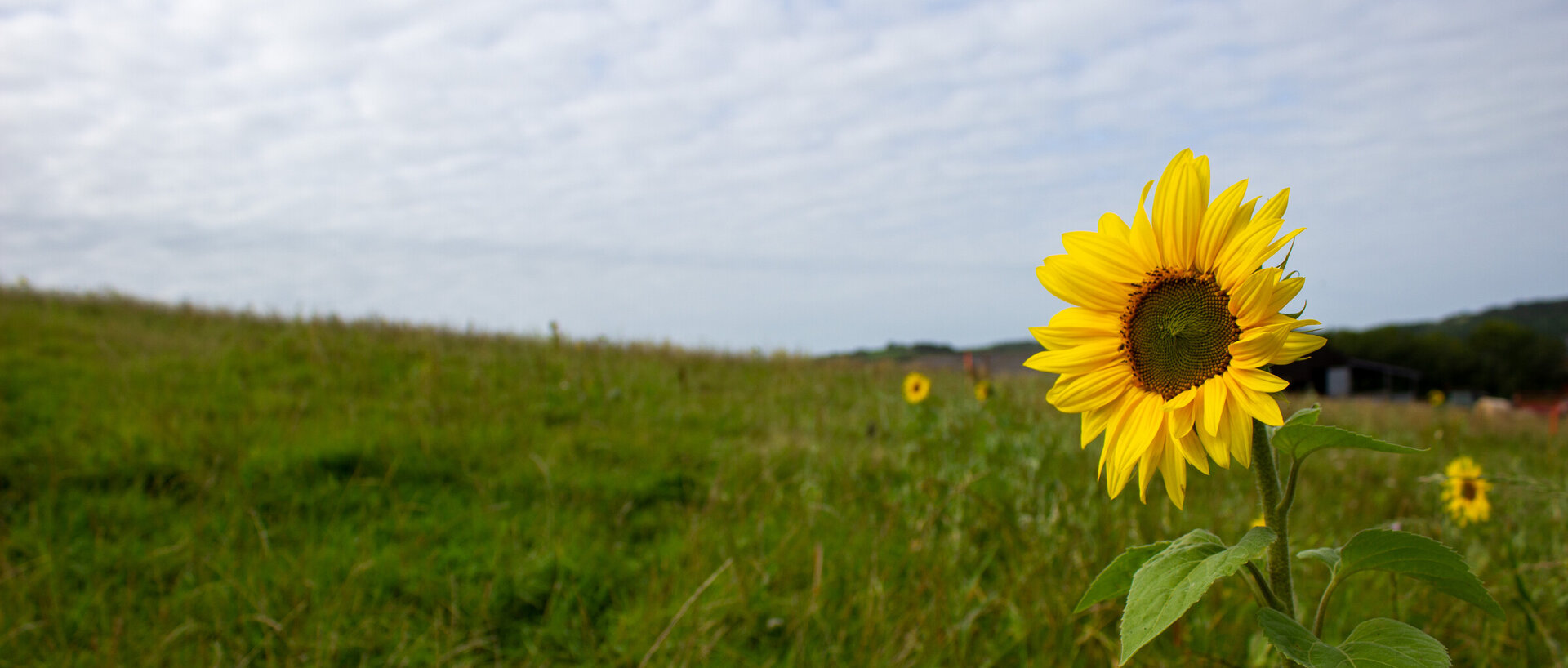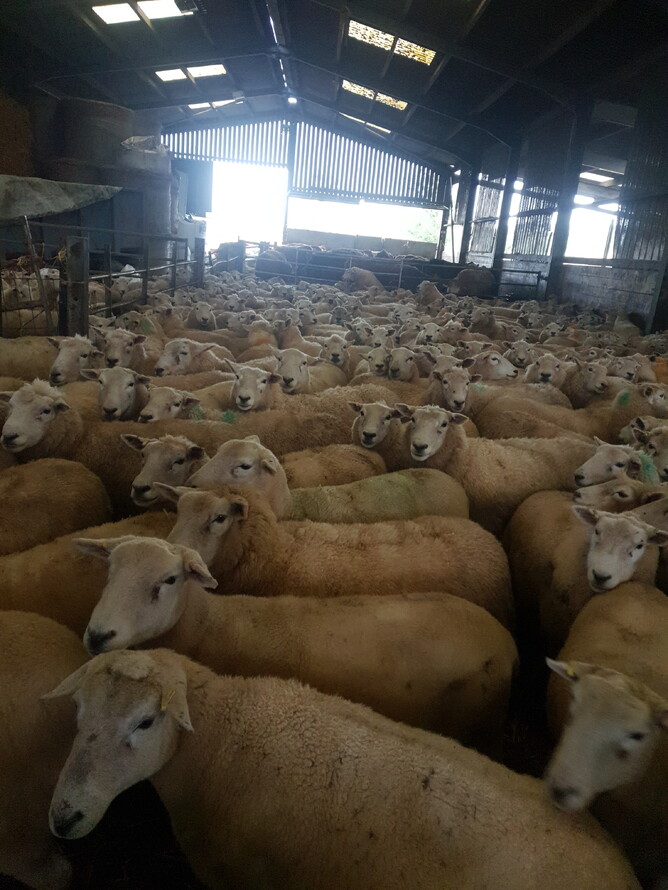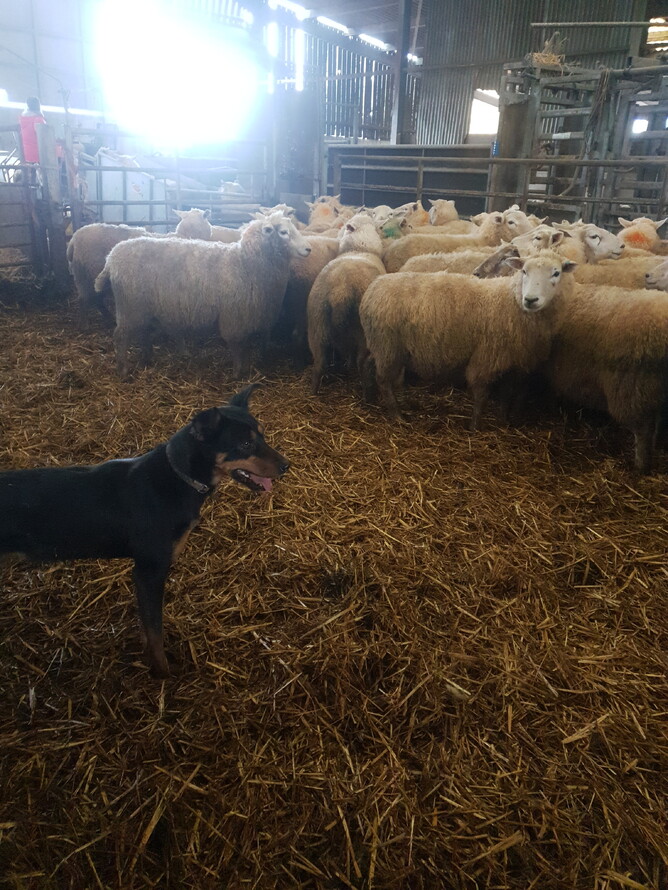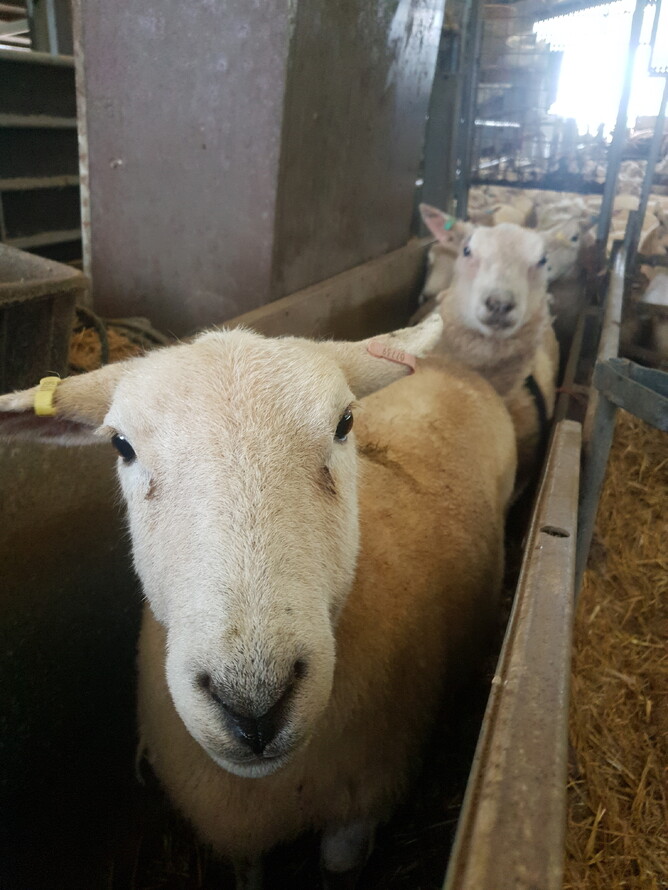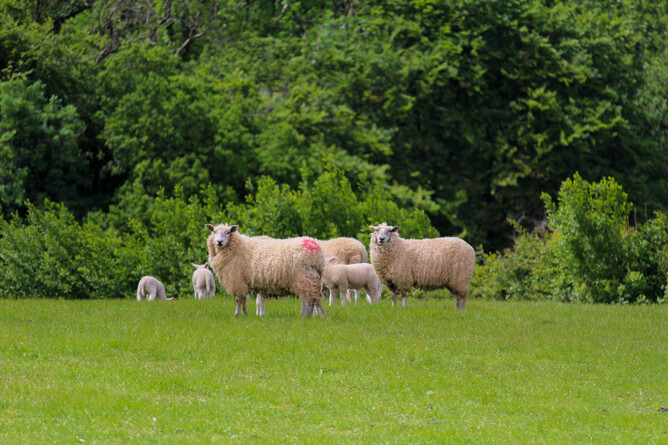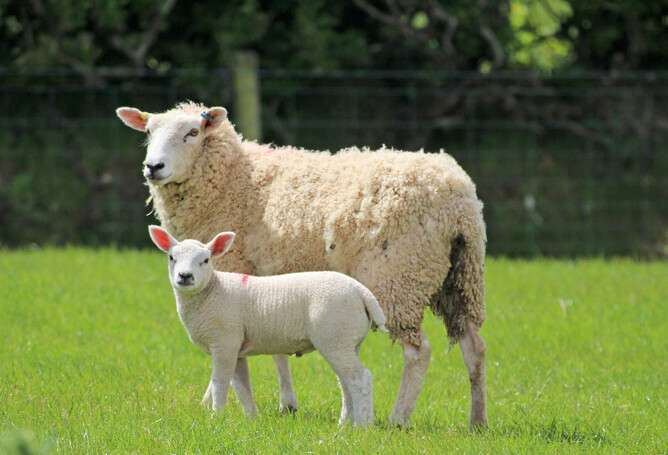Our sheep are back home from their winter holidays on our local arable and dairy farms and it’s time for pregnancy scanning! And now, the results are in…
What to expect from different breeds
Different sheep farms expect different scanning results from their ewes. Hill farm sheep such as Herdwicks and Scottish Blackface sheep have a tougher life exposed to the weather on the mountains and moors. With poorer quality grass they only tend to rear one lamb each every year. Meanwhile, most inside lambing flocks consist mostly of Suffolk sheep and Mules (a crossbreed sheep always fathered by a Blue-faced Leicester). These sheep are more fertile and are expected to produce at least two lambs each. They’re given extra feed to help with rearing more lambs and need overseeing more closely at lambing time as they often need help to give birth. This is how we used to lamb our sheep at Redwoods Farm over 10 years ago, putting the ewes and lambs outside at a few days old and supplementary feeding them alongside the grass.
Now we have switched to more hardy and independent breeds - mostly Highlander and Exlana sheep. They lamb outside in a more lowland setting (although we are nearly the same height as Exmoor!) so we aim for most ewes to have two lambs each and our ewe lambs to have one each. We don’t feed our sheep any supplementary feed at any point so their bodies tend to know what they can cope with; both our youngest and oldest girls usually only have one lamb. That means we have manageable numbers of lambs to cope with at lambing. For example, too many triplets would mean a lot of orphan lambs as many ewes do not have enough milk to rear three lambs.
This year our results are:- 168% in our ewes
- 112% in our ewe lambs
Sorting time
Once we know how many lambs each ewe will have we sort them into groups. The ewes having one lamb each - singles - are put on a diet. They go into fields with less grass to ensure their lambs do not get too big and the vast majority can give birth by themselves without our help, minimising stress at lambing time. Sometimes we have a few singles who have lost condition (they could be older or have been ill) so they need a little extra to get them to lambing time and we let them join the ewes with more grass.
Our girls having two or three lambs each need more grass to grow strong healthy lambs. They’re at a much lower risk of having a difficult birth because of oversized lambs as they split their resources between two or more lambs, resulting in multiple smaller lambs. These ewes will also need to produce more milk when they’ve had their lambs so we give them a head start by giving them the best grass.
First time mums
Being first time mums, we only expect our ewe lambs to rear one lamb each. They’ve never had a lamb before so we give them minimal grass leading up to lambing - it’s much easier to give birth to a small lamb the first time! They’re just over a year old when they give birth: not quite fully grown. Therefore, when they have their lambs they’re given plenty of grass so they can grow both themselves and their lamb.
These new mums rely heavily on their natural instincts when it comes to having lambs. It’s amazing to see how quickly they figure out what to do with the strange little thing that just came out of them! We intervene as little as possible so they can feel more relaxed and natural about the whole process, giving them time to bond with their new baby.
What about those scanned as empty?
There will always be a small percentage which do not get in lamb. This could be for a variety of reasons: being unwell, too old or even too fat or thin. It’s more common for ewe lambs to be empty as it can be too much for a young sheep to deal with. Lambing our ewe lambs is a bit of an early selection process to help us choose which of them we want to breed in future years. After all, we want our ewes to live as natural a life as possible and part of that means they rear their lambs independently and stress free. We’ve found that a sheep that doesn’t get in lamb as a ewe lamb is more likely to have trouble during lambing time in future years.
For those which scan as empty, they have reached the end of their time on the farm. This is the time of year when we top up our mutton supply - the end of life for these ewes does not result in waste. In fact, our mutton is in high demand due to its deep flavour, developed over years of grazing and regenerating our diverse pastures, climbing the steep slopes of Devon and relaxing within their beloved flock. It’s true that our mutton deserves a certain level of appreciation, out of respect for all the ewe has given and achieved through her life on the farm.
Lambing outside
The most natural place for a sheep to be at all times is outside, even when it comes to giving birth. Surrounded by the flock, the ewe feels safe to have her lambs. She’s fiercely protective of her new family but there are still predators on the prowl so we check on our flock multiple times a day to make sure everyone is safe.
Lambing outside also means our sheep can be 100% pasture fed, year round. The only food they eat is what is in the field in front of them. Our sheep are experts at converting plants inedible to humans into the most delicious lamb!
While we prepare for lambing, our ewes can graze peacefully in the fields, making the most of the calm before the chaos of lambing. If you would like to know more about our sheep, click here.
